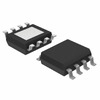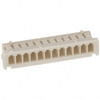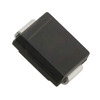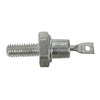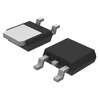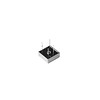LM3481MM NOPB Converter: Features, Pinout, and Technical Insights
In the fast-evolving landscape of power electronics, efficiency and adaptability are dominant, especially when dealing with complex systems like converters and regulators. The LM3481MM/NOPB switching converter stands out as a versatile component, catering to a wide range of applications such as portable electronics, power supplies, and LED drivers. This article digs into the intricate details of the LM3481MM/NOPB, exploring its features, performance characteristics, and practical applications. By blending theoretic principles with actual examples, we aim to provide a comprehensive understanding of this powerful device and its role in modern circuit design.Catalog
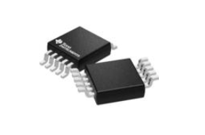
LM3481MM/NOPB Switching Converter Overview
The LM3481MM/NOPB emerges as a flexible and efficient device, characterized by its integration of a 600mA N-channel power MOSFET. It fits seamlessly into applications demanding low-side FET setups like boost, flyback, and SEPIC. With a notable 1MHz switching frequency and the ability to deliver a 10A output current, this device comes in a compact MSOP package, available in tape and reel. Safety features such as over-voltage, short-circuit, and thermal protection enhance its dependability and adaptability across varied environments. Its power-saving shutdown mode curtails supply current to 5µA, promoting efficient power sequencing. The converter’s efficiency in maximizing power usage is evident, especially in portable electronics where battery longevity deeply influences design choices and fosters a balance between performance and energy savings.
Alternatives and Equivalents
• LM3481MM
LM3481MM/NOPB Symbol and Footprint

LM3481MM/NOPB Technical Parameters
|
Product Attribute |
Attribute Value |
|
Manufacturer |
Texas
Instruments |
|
Package
/ Case |
MSOP-10 |
|
Packaging |
Tape
& Reel (TR) |
|
Length |
3 mm |
|
Width |
3 mm |
|
Height |
1.07
mm |
|
Input
Voltage |
2.97
V ~ 48 V |
|
Output
Voltage |
1.275
V ~ 41 V |
|
Output
Current |
10 A |
|
Switching
Frequency |
100
kHz ~ 1 MHz |
|
Operating
Temperature |
-40°C
~ 125°C |
|
Pin
Count |
10 |
|
Mounting
Style |
SMD/SMT |
|
Number
of Outputs |
1
Output |
|
Product
Type |
Switching
Controllers |
Characteristics of LM3481MM/NOPB
Frequency Adjustment Flexibility
The LM3481MM/NOPB provides adaptable switching frequency control, ranging from 100kHz to 1MHz. Using an external resistor or clock synchronization, this feature allows precise tuning for various applications. It often enjoys the challenge of balancing efficiency with electromagnetic compatibility, taking advantage of this flexibility to fine-tune performance.
Power Handling and Efficiency
With its advanced 600mA power MOSFET, this component achieves remarkable efficiency. By curbing energy losses, it supports a reduction in electronic power consumption. They consider factors like switching speed and thermal characteristics to enhance MOSFET performance and accent the exact process of component selection in complex systems.
Protection Features: Overcurrent and Thermal
Designed with robust safety features, the LM3481MM/NOPB includes automatic overcurrent protection that responds during overloads to protect sensitive components. Its thermal shutdown functions at higher temperatures to ensure durability and reliability, mainly in environments with variable power requirements.
Customizable Soft-Start Function
One notable feature is the programmable soft-start, which reduces sudden current spikes at startup. This gradual increase benefits circuit integrity and extends the lifespan of connected components. They implement soft-start to avoid stress on capacitors and inrush current issues, emphasizing its value in system stability.
LM3481MM/NOPB Pin Configuration and Packaging
Pin Configuration
The LM3481MM/NOPB exhibits a thoughtfully crafted 10-pin layout.
• ISEN (Current Sensing): Enables accurate current tracking, offering protection during operation with an eye on stability.
• UVLO (Under-Voltage Lockout): Maintains device consistency by halting functions under low voltage, ensuring readiness in fluctuating conditions.
• COMP (Compensation): Refines loop regulation, boosting the system's responsiveness and steady performance.
• FB (Feedback): Monitoring the output voltage, helps sustain reliable output consistency.
LM3481MM/NOPB Package
The LM3481MM/NOPB is housed in an MSOP (Miniature Small Outline Package), ideal for scenarios demanding space efficiency.
• Compactness: Perfect for densely packed circuit architectures.
• Electrical Performance: Its design reduces parasitic inductance and capacitance, enhancing capability in high-speed contexts.
• Moisture Resistance: Strengthens durability against environmental challenges, dynamic for sustained functionality over time.
LM3481MM/NOPB Application
Versatile Use in Power Conversion
The LM3481MM/NOPB finds its role in configurations like flyback and buck-boost converters. These converters thrive in contemporary power systems, enabling smooth transitions between voltage levels. They are mainly aligned with the energy efficiency demands of portable electronics, capturing the essence of efficient energy use.
Boosting Portable Device Efficiency
In gadgets such as mobile phones and game consoles, the LM3481MM/NOPB plays a major role in refining power management. By sharpening the power conversion process, it extends battery life, fostering user satisfaction and a competitive edge for the device. This enhancement not only prolongs operational hours but also quickens charging times, resonating with the desires of modern consumers.
Enhancing LM3481MM/NOPB Efficiency
Balancing Switching Frequency
Adjusting the switching frequency can suggestively reduce switching losses, influencing overall efficiency. Lowering frequencies often necessitates larger inductors and capacitors, creating a trade-off between frequency and passive component size. This balance can be refined by assessing precise application demands and limitations, integrating human intuition and judgment.
Voltage and Current Fine-Tuning
Adjusting voltage and current thresholds with precision allows systems to operate in more efficient ranges. Fine-tuning these parameters avoids wasted energy, enhancing performance. It is frequently use simulation tools to model and predict optimal conditions, driven by a desire to innovate and excel.
Employing Synchronous Rectification
Synchronous rectification can significantly boost efficiency, especially for systems with low output voltages. By substituting diodes with low-resistance MOSFETs, conduction losses are minimized. This method is regarded as a practical strategy to enhance converter efficiency across various applications.
Effective Heat Management Strategies
Crafting a solid heat dissipation strategy is active for device longevity and performance. Effective thermal management involves choosing suitable heat sinks and crafting an efficient airflow path. Practical experience shows this can greatly reduce thermal stress, nurturing the device's functional endurance.
Choosing Low On-Resistance MOSFETs
Selecting MOSFETs with low on-resistance is active for reducing conduction losses. Components should be chosen based on their load-handling capacity while maintaining low resistance at operating temperatures, reflecting a meticulous and discerning technologizing mindset.
Component Selection for LM3481MM/NOPB
Protection and Safety Insights
When choosing components, it's dynamic to consider safety features that evoke the essence of security and foresight. Look for attributes like over-current protection and thermal shutdown. These features contribute to a component's resilience under various conditions, such as high temperatures or unexpected load spikes. Balancing cost and quality becomes a thoughtful practice to mitigate future risks in applications.
Magnetic Characteristics and Inductor Choices
Magnetic properties heavily influence performance, mostly in selecting suitable inductors. Seek those with low core losses and robust saturation current ratings. Components with proper magnetic properties bolster efficiency, especially in power-sensitive cases. This careful selection echoes the common pursuit of system longevity and functionality within the professional community.
Managing Inrush Currents
Align your component choices with inrush current limitations to shield the system during power initiation. Soft-start techniques serve as a prudent method to manage these currents. In electronics circles, there's a shared understanding about preventing abrupt surges that could lead to failures, accent the importance of forethought in design.
Voltage and Current Stabilization
Choose components that align with the desired electrical specifications to maintain desired input/output voltages and currents. Implement suitable capacitors to mitigate voltage fluctuations. This approach is widely respected for its ability to stabilize power delivery amidst changing load conditions.
Frequency Fine-Tuning
Utilize an external resistor or clock source to control the operating frequency. This capability allows you to adjust for precise application needs. Precision in frequency control is a favored technique in advanced designs that require flexible responses to varying operational contexts.
Frequently Asked Questions [FAQ]
1. What is the LM3481MM/NOPB?
The LM3481MM/NOPB is a highly adaptable DC/DC converter, crafted for efficient voltage regulation, whether stepping up or stepping down. Its versatility makes it suitable for a variety of power management scenarios. This ensures superior energy conversion and the smooth running of systems.
2. What factors should be considered when using the LM3481MM/NOPB?
Using the LM3481MM/NOPB requires careful evaluation of several elements to ensure dependable performance robust protection features, thorough component selection, precise frequency adjustments, effective thermal management, and adherence to voltage/current limits. Insights from practical experience reveal that the interplay of these factors can greatly boost circuit stability, offering a glimpse of masterful manufacturing.
3. What is the function of the power-saving shutdown mode of LM3481MM/NOPB?
Designed to support efficient power management, the power-saving shutdown mode notably diminishes supply current, thereby extending the device's lifespan. It proves mostly beneficial in scenarios where conserving energy takes high priority, as it effortlessly balances performance with efficiency.
4. What are the typical applications of the LM3481MM/NOPB?
This converter serves a broad spectrum of applications like power supplies, LED drivers, and varied converter needs. It thrives in settings where precise voltage regulation is required, reflecting its ability to cater to sophisticated energy conversion demands.
5. Does LM3481MM/NOPB have overcurrent protection?
Yes, the LM3481MM/NOPB includes an automatic overcurrent protection mechanism. This feature plays an exciting role in circuit safety, reducing the likelihood of damage by promptly cutting off the switch in overcurrent situations. It highlights the significance of embedding safety measures in contemporary electronic design.
About us
ALLELCO LIMITED
Read more
Quick inquiry
Please send an inquiry, we will respond immediately.
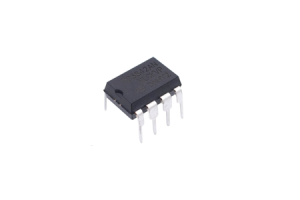
Exploring the UC3842AN Controller: Features, Symbol, and Layout
on September 30th
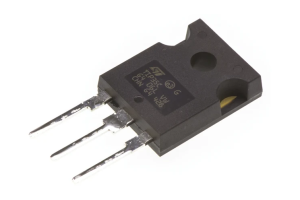
TIP35C Transistor Overview and Applications
on September 30th
Popular Posts
-

What is GND in the circuit?
on January 1th 2933
-

RJ-45 Connector Guide: RJ-45 Connector Color Codes, Wiring Schemes, R-J45 Applications, RJ-45 Datasheets
on January 1th 2485
-

Fiber Connector Types: SC Vs LC And LC Vs MTP
on January 1th 2077
-

Understanding Power Supply Voltages in Electronics VCC, VDD, VEE, VSS, and GND
on November 8th 1871
-

Comparison Between DB9 and RS232
on January 1th 1758
-

What Is An LR44 Battery?
Electricity, that ubiquitous force, quietly permeates every aspect of our daily lives, from trivial gadgets to life-threatening medical equipment, it plays a silent role. However, truly grasping this energy, especially how to store and efficiently output it, is no easy task. It is against this background that this article will focus on a type of coin cell battery that may seem insignificant on the...on January 1th 1707
-

Understanding the Fundamentals:Inductance Resistance, andCapacitance
In the intricate dance of electrical engineering, a trio of fundamental elements takes center stage: inductance, resistance, and capacitance. Each bears unique traits that dictate the dynamic rhythms of electronic circuits. Here, we embark on a journey to decipher the complexities of these components, to uncover their distinct roles and practical uses within the vast electrical orchestra. Inductan...on January 1th 1649
-

CR2430 Battery Comprehensive Guide: Specifications, Applications and Comparison to CR2032 Batteries
What is CR2430 battery ?Benefits of CR2430 BatteriesNormCR2430 Battery ApplicationsCR2430 EquivalentCR2430 VS CR2032Battery CR2430 SizeWhat to look for when buying the CR2430 and equivalentsData Sheet PDFFrequently Asked Questions Batteries are the heart of small electronic devices. Among the many types available, coin cells play a crucial role, commonly found in calculators, remote controls, and ...on January 1th 1536
-

What Is RF and Why Do We Use It?
Radio Frequency (RF) technology is a key part of modern wireless communication, enabling data transmission over long distances without physical connections. This article delves into the basics of RF, explaining how electromagnetic radiation (EMR) makes RF communication possible. We will explore the principles of EMR, the creation and control of RF signals, and their wide-ranging uses. The article ...on January 1th 1530
-

CR2450 vs CR2032: Can The Battery Be Used Instead?
Lithium manganese batteries do have some similarities with other lithium batteries. High energy density and long service life are the characteristics they have in common. This kind of battery has won the trust and favor of many consumers because of its unique safety. Expensive tech gadgets? Small appliances in our homes? Look around and you'll see them everywhere. Among these many lithium-manganes...on January 1th 1500



